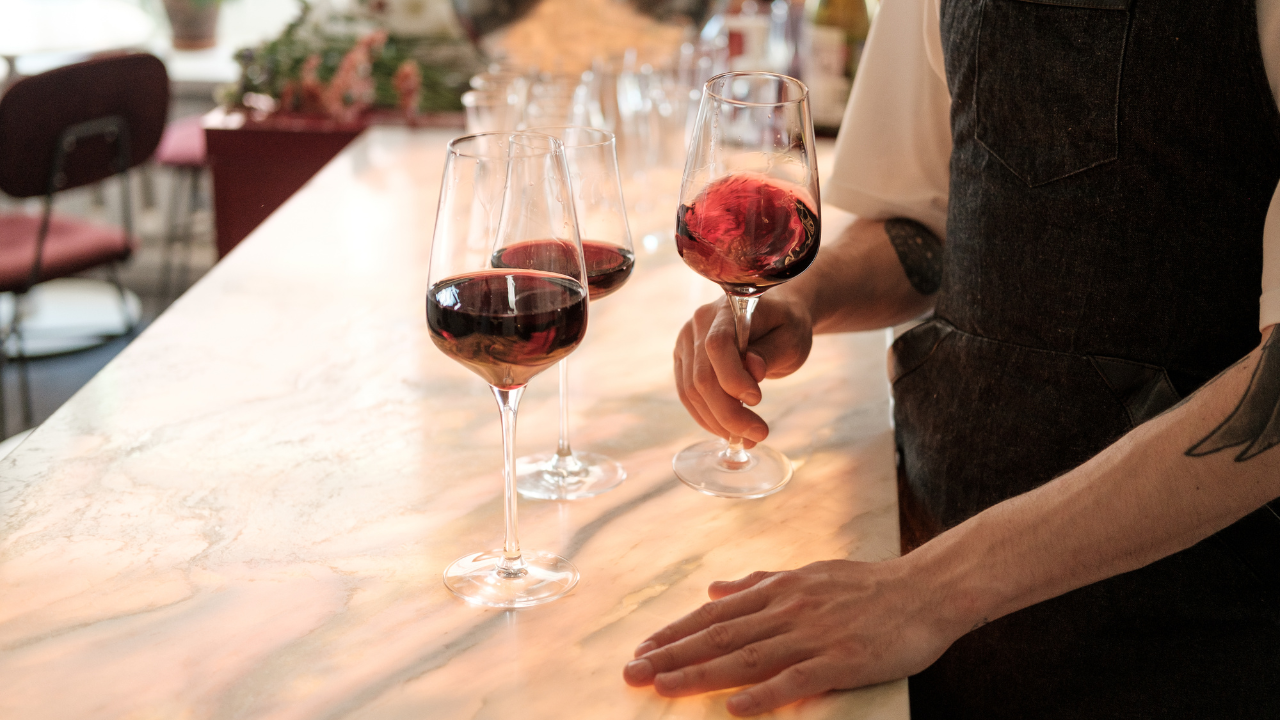Why a wine glass should never be filled to the brim
Anyone who has taken part in a wine tasting or simply ordered a glass of wine at a restaurant has probably noticed an interesting detail: the wine glass is never filled to the top. At first glance, this practice might seem like a random choice, or, to the less experienced, even a lack of generosity. In reality, that’s not the case. It’s a fundamental rule of proper wine service.
There are clear and specific reasons behind this practice. Each type of wine has an ideal amount to be poured into the glass, carefully chosen to enhance its qualities at best. But what lies behind this seemingly simple rule? Why should a wine glass never be filled to the brim? We explain everything in our article.
Why is wine never poured to the brim of the glass?
It’s not a lack of generosity! There are specific reasons why a wine glass is never filled to the brim. Let’s take a look at them, one by one.
1. Enhancing the release and perception of aromas
The amount of wine poured into the glass directly affects the perception of its aromas. When wine comes into contact with air, natural reactions occur that help release its aromatic compounds. The principle is simple: the larger the surface exposed to oxygen, the greater the development and release of aromatic substances and, therefore, the stronger their perception through the nose.
If the glass is too full, this surface area is reduced and the wine tends to remain “closed,” limiting the sensory experience. On the other hand, pouring a moderate amount into the glass is essential to allow the wine to “breathe”, open up gradually and express its aromatic potential.
2. Maintaining the ideal tasting temperature of the wine
The amount of wine poured into the glass also affects its serving and tasting temperature. Each type of wine has an ideal serving temperature, which is essential to fully appreciate its aromas, structure and flavor.
Once poured into the glass, wine tends to warm up quickly, moving away from its ideal tasting temperature. To prevent this unwanted effect, it is advisable to pour only the necessary amount, avoiding overfilling the glass. This way, the temperature increase is limited, keeping the wine fresher for longer. This precaution is especially important for white, rosé and sparkling wines, which are more sensitive to temperature variations.
3. Facilitating the swirling of wine in the glass
Swirling the wine in the glass is one of the most iconic gestures in wine tasting. It helps to oxygenate the wine and, consequently, to enhance the release of its aromas. The amount of wine poured into the glass affects this action. If the glass is too full, swirling becomes difficult and unsafe, limiting the wine’s movement inside the glass. On the other hand, when the glass is not filled, swirling the wine becomes easier and more effective.
4. Preventing wine spills from the glass
The amount of wine poured into the glass also affects the practicality of service and the quality of the tasting experience. Here’s why: filling the glass to the brim significantly increases the risk of spills, both while pouring and drinking. Pouring a moderate amount of wine greatly reduces these risks, helping to make the experience more elegant, tidy and enjoyable.
Now you know why a wine glass should never be filled to the brim.
Before concluding, here’s a brief summary of the ideal amount of wine to pour into the glass depending on the type:
● red wine: one-third of the glass – up to two-thirds for lighter and less structured varieties
● white wine: up to two-thirds of the glass
● rosé wine: up to two-thirds of the glass
● sparkling wine: up to two-thirds of the glass
● dessert wine: one-third of the glass
Follow these guidelines for the ideal serving and tasting experience.
If you liked our article and if you want to continue to receive news, updates and curiosities about the world of wine, subscribe to the Wineshop.it wine newsletter. Lots of content and offers await you!










